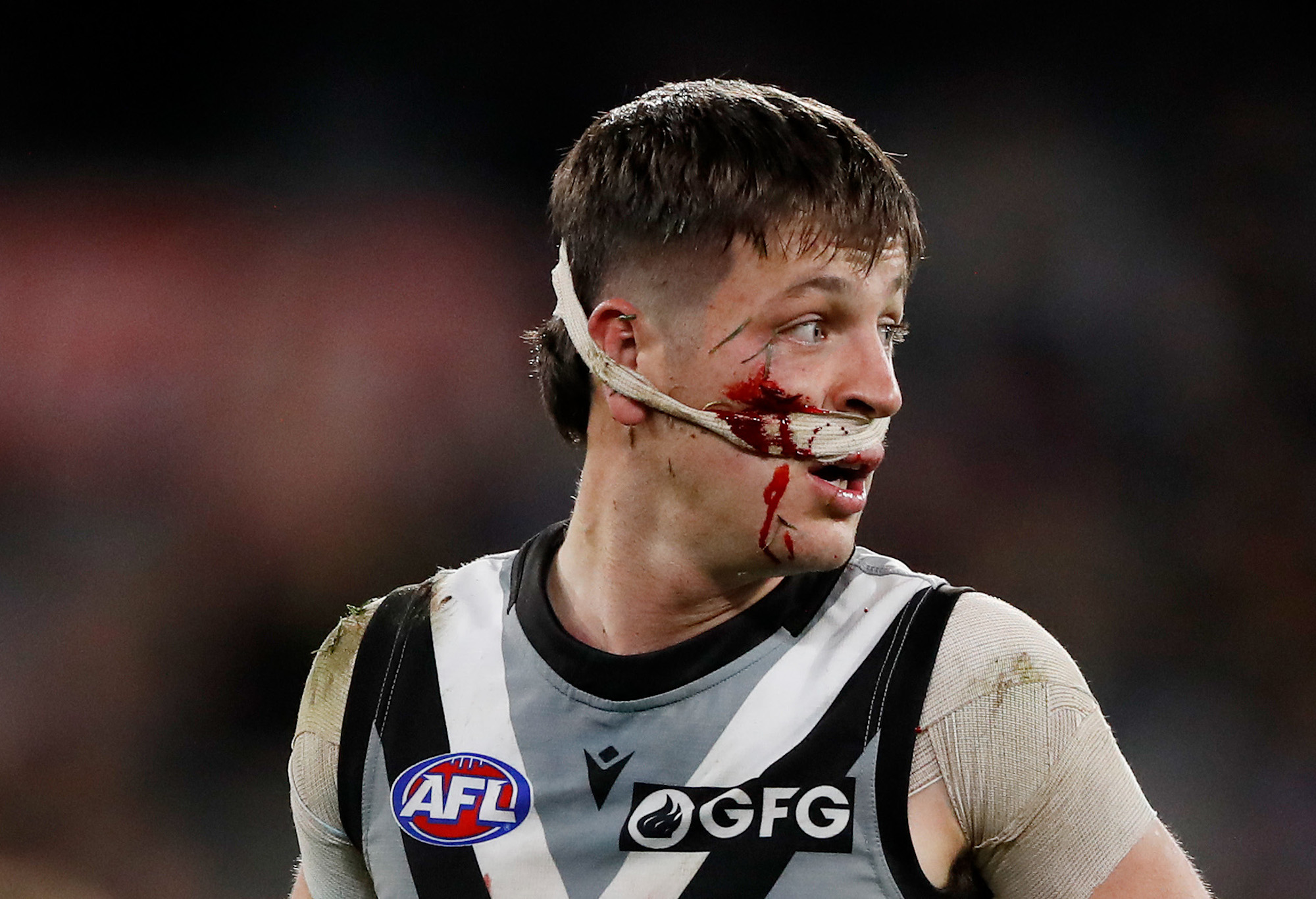The key mistake the AFL keeps making in its attitude towards high contact

With a continued need to protect the head of AFL players and the speed of the game becoming ever quicker, decisions made in the AFL judiciary process remain challenging to people involved in the game and AFL football as a whole.
Barely a week goes by where a footballer choosing to bump or brace isn’t in hot water after making high contact with an opposition player and frankly, the intricacies within the split second incident that are argued, discussed and debated somewhat miss the entire point.
Toby Greene’s recent rough conduct charge after he leapt in the air at a contest and made high contact with the head of Carlton’s Jordan Boyd is a classic example of the quagmire in which the game finds itself, with former players such as Jonathan Brown firmly pitched in the now suspended Greene’s corner.
Many others support the final decision made at the judiciary to uphold the original one week ban and feel that the burden of responsibility should fall solely on the player leaving the ground and subsequently making contact with the opponent; one that in this case, kept his eyes focussed on the ball throughout.
It appears to me that enforcing notions of responsibility and accountability might simplify the entire process for a judiciary system that appears to have tied itself in inconsistent knots, with the increasing layers of interpretation that have been added.
In the modern era and despite a supposed emphasis on the protection of the head, players appear capable of doing incredible damage to another individual thanks to rough contact and still sometimes manage to escape sanction.
Clever representation at judiciary hearings using rhetorical questions such as “Was it unreasonable for the player to?” and science and physics to mount cases for the player having caused the damage, appear to fail to read to modern room.
Fox Sports analyst David King hit the nail on the head when he made comments around the recent absence of a suspension for Brownlow Medal chance Zak Butters, after the Port Adelaide star made high contact with Fremantle’s Bailey Banfield.
Match Review Officer Michael Christain’s view that the contact was not a suspendable offence was stunning to say the least and sent a rather clear message to the rest of the competition that it is indeed still acceptable to make high contact and injure a player, without the action necessarily being deemed punishable.
I wish such a view had been in existence when I had my first and only prang on the road. An elderly chap in front of me at a ‘turn left at any time with care’ intersection decided not to follow the car directly ahead of him in merging out into what were empty lanes of traffic.
Zak Butters plays the game well and hard. (Photo by Dylan Burns/AFL Photos via Getty Images)
Instead, he sat tight, far too conservatively, and as I looked to the right to ensure there was not a car in sight, took the full brunt of my Toyota as I simultaneously took off, assuming he was well and truly out of the way.
It was far from the biggest bingle, yet as we both stepped from our vehicles and my frustration grew as to why the silly bugger had not gone when he clearly could have, it was time for me to apologise.
It did not matter that there was no intent on my behalf, no malice and anger in my action. It was plain and simply my fault, as is clearly laid out in the law of the land when it comes to vehicles on Australian roads.
Thus should people like both Greene and Butters be treated when it comes to evaluating incidents on a football field.
Neither Banfield or Boyd deserved what they got. Both were contesting the ball and neither did anything reckless or mad to have created a situation where they brought damage onto themselves.
In a nutshell, they were footballers running around a field, chasing a ball, who were collected high and the culprits both deserve sanction, regardless of intent, their skill level or popularity, which does appear to have become a part of the judiciary process.
Sports opinion delivered daily
Keeping the entire system more clear-cut and protective of the minds that obviously require it, based on the swathe of evidence showing the long term damage occurring to players, should be paramount in 2024.
As should excluding ridiculous discussion around what players were ‘meant’ to do in certain situations or what legal minds argue is ‘reasonable’ in football scenarios that they have never been in themselves. Both do little more than add comedic effect and inconsistency to the AFL’s stance on head injuries, trauma and what the game looks like in the future.
Dear AFL player, I’m sorry you clocked your opponent and appreciate you were not intending to do so. However, the victim cannot be expected to take responsibility, quite simply, you must.
Sure, it might be unfortunate, perhaps even a little unfair at times. But that is precisely how I felt when I rear-ended that fella on Victoria Road in 2007.
I stuffed up, without intent and rightly took the blame. It is time the AFL did the same with its players.
